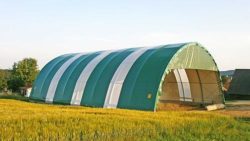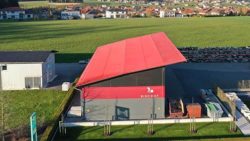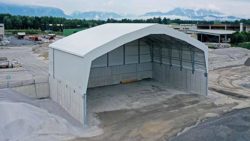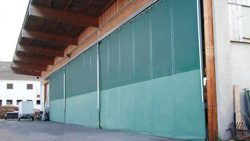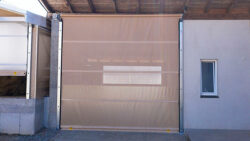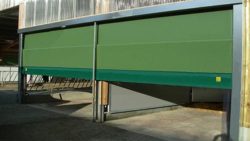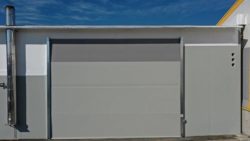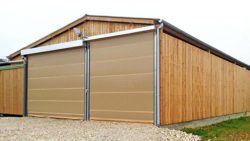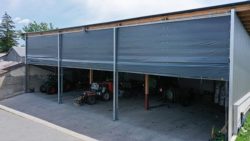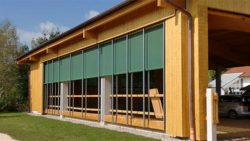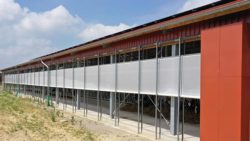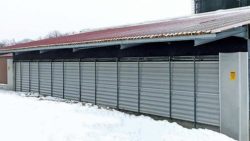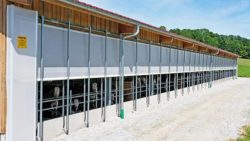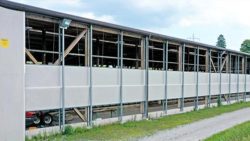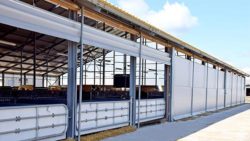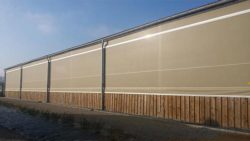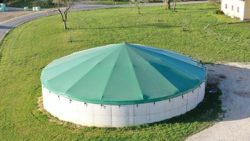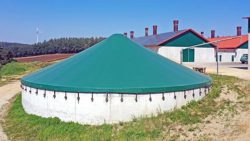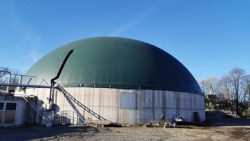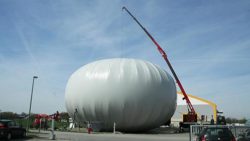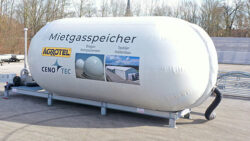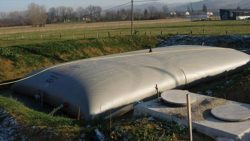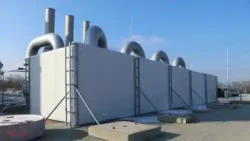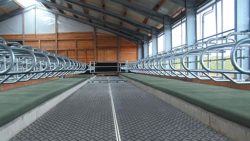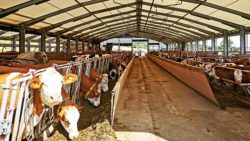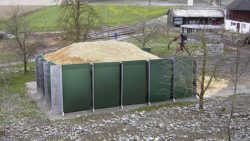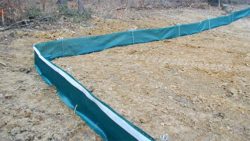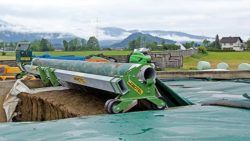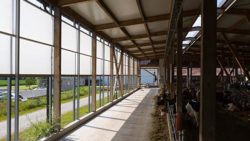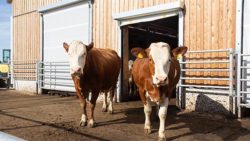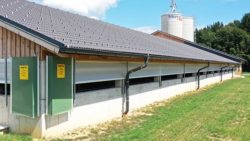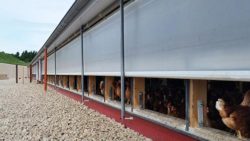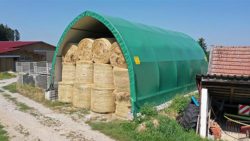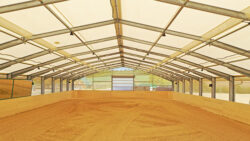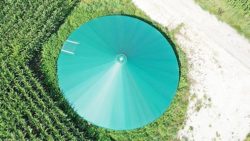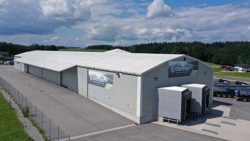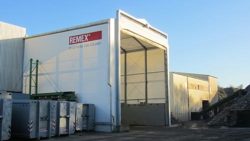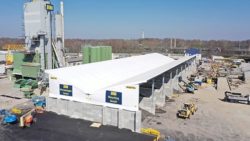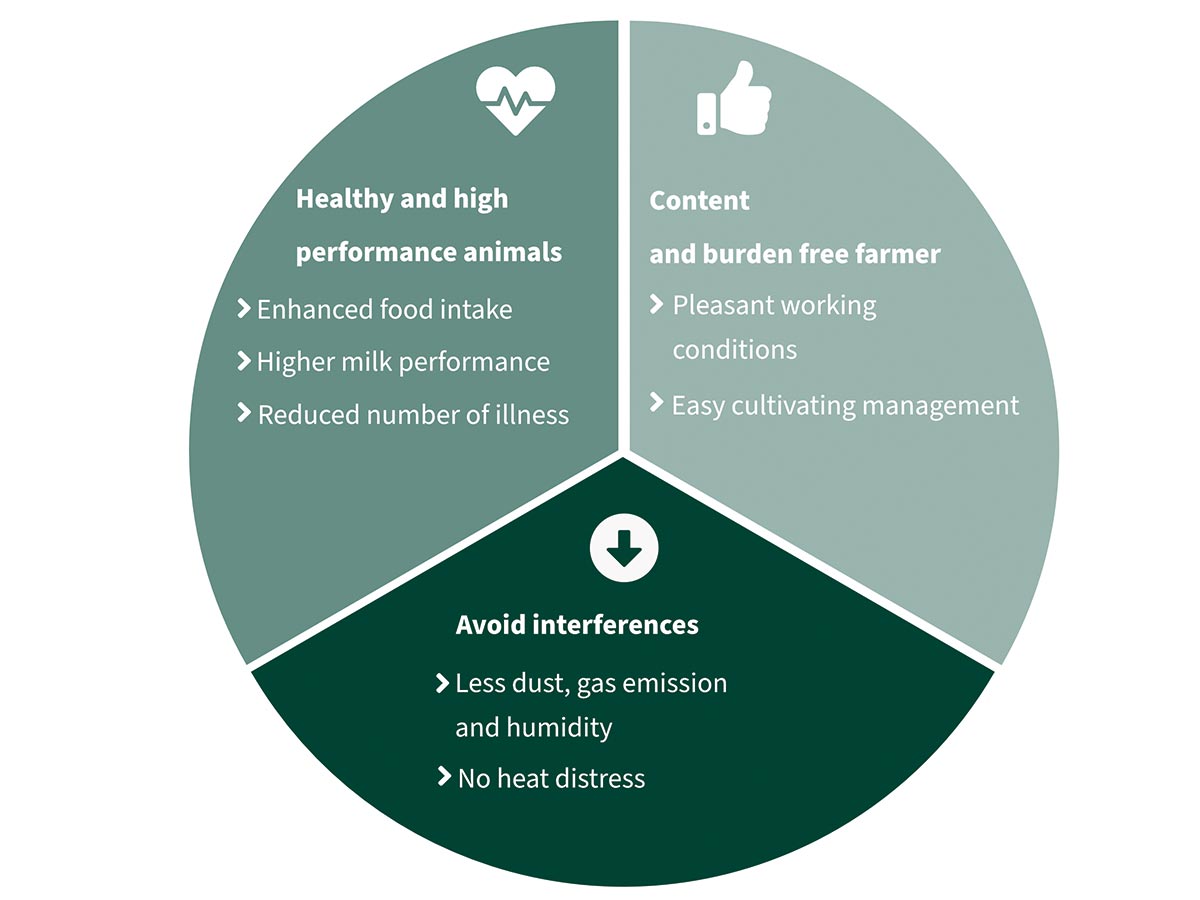Best stable climate for healthy animals
Sufficient light and air supply are prerequisites for the well-being and performance of your animals. Perfect conditions in the stable bring a lot of advantages.

What’s the optimal climate for a cattle or dairy barn?
Air temperature 4 - 15°C
Low pollutant gas content
Air humidity 50 - 80%
Sufficient light (dairy cattle 120 lux, calves min. 80 lux)
Protection from draughts
Low dust load
How does the stable climate influence the welfare of the animals?
The barn climate has an enormous influence on the well-being and health of animals and contributes significantly to a species-appropriate husbandry system. Unfavourable stable climate conditions can have a negative impact on animal performance. Or vice versa: the more performance we expect from our animals, the higher are their demands on their environment.
Poor air conditions in the stable have negative consequences for...
...animals...
- Heat stress (from 23°C)
- Health risks due to noxious gases
- Danger of colds due to wet coat
- Decline in performance: decrease in milk yield, deterioration in fertility, lower meat performance
...and humans.
- Damage to the building structure
- Dust and moisture promote fungi and germs
- Poor working conditions
The solution: Natural ventilation
Nowadays, cattle barns are mainly ventilated naturally. In most barns, the required air quality can only be ensured throughout the year with natural ventilation systems.
Natural ventilation through side wall ventilation systems
A prerequisite here is that the barn temperature is higher than the outside temperature. Cool air flows into the barn through curtains or gates. This air flows through the animal area, warms up and rises. It escapes to the outside through a ridge opening.
This constant air flow removes moisture, harmful gases and heat from the barn.
Chimney effect with light-ventilation ridge
The AGROTEL light and ventilation ridge completes the natural ventilation concept of species-appropriate housing. The adjustable ridge construction creates a chimney effect that draws stale air outside. This makes optimal use of the barn’s natural thermals. Animals and farmers also benefit from additional daylight.
Natural ventilation through thermals
Eaves/ridge ventilation: Air flows under the roof tiles at the eaves and escapes at the ridge. Moisture from the roof area is removed.
Cross-ventilation: Flexibly controllable curtains can be adjusted precisely so that a crosswise air exchange takes place without excessive air velocities occurring.
Chimney effect: Warm air rises upwards, creating a slight vacuum in the lower levels through which fresh air is drawn in from outside. This creates a natural air flow.
Shading: Adjustable side wall ventilation systems also protect the animals from heat stress caused by direct sunlight.
The limits of natural ventilation
The principle of natural ventilation reaches its limits at very high outdoor temperatures or in stables where the fresh air supply is limited by the structural design of the stable. The temperature difference between inside and outside is missing as, so the air flow stops.
Fan-operated ventilation systems
Ventilators can be used to improve the supply of fresh air in poorly ventilated stall compartments. Hose ventilation systems, such as AGROTEL SOFTAIR and AGROTEL COOLAIR, use supply air ventilators to convey oxygen-rich air into the stable compartment. The air outlets are tailored in accordance with the intended use and required air volume.
Together with you, we develop the right ventilation system for your barn. Whether natural air movement through curtains, windbreak systems for special requirements, or a combination of wind protection, shading and supply air cooling – we create the perfect conditions in your stable.

